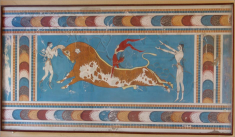Speaker
Description
A vast body of astrophysical and cosmological observations point to the existence of an abundant form of matter interacting almost exclusively through gravity. A leading dark matter candidate is a weakly interacting massive particle, or WIMP, a thermal relic of the Big Bang, which has a sub-electroweak-scale self-annihilation cross-section and a mass in the TeV/c^2-range. The motion of galactic halo WIMPs relative to a detector on Earth could result in WIMP-nucleus elastic collisions detectable by a low-background, low-energy-threshold detector capable of unambiguously identifying a small number of nuclear recoils from WIMP collisions over the course of a very large exposure. Thanks to its excellent ionization response and unique scintillation light emission characteristics, liquid argon can provide excellent sensitivity for WIMP nuclear collisions and strong background suppression. Building upon its vast experience with liquid argon detectors, the DarkSide Collaboration, now Global Argon Dark Matter Collaboration, is building a new generation experiment featuring 50 tonnes of liquid argon as the target for DM interactions hosted in a dual-phase time projection chamber. This experiment, DarkSide-20k, extends the cross-section vs. mass range sensitivity in the search for dark matter to 4.6x10^-48 cm^2 for a 90% C.L. exclusion and 1.5x10^-47 cm^2 at a 5 sigma discovery significance for a 1 TeV/c^2 WIMP after a 10 yr run, well beyond any current or presently funded experiment. Several essential elements allow DS-20k to achieve this goal. These are low argon target activity; use of the scintillation light signal for energy measurement and pulse shape discrimination (PSD) against backgrounds; event position reconstruction using the ionization signal; an active neutron veto surrounding the LAr TPC; and excellent shielding from background radiation by an active muon veto. These techniques are implemented by a combination of new and proven technologies, including low radioactivity argon from underground sources, SiPM-based cryogenic photosensors, and a ProtoDUNE-like cryostat filled with atmospheric argon (AAr), and a LAr TPC constructed from low background acrylic. In addition, thanks to its large active mass and intrinsic radio purity, DS-20k will be able to pursue a rich scientific program, spanning from the observation of supernovae in the Milky Way and the solution of the neutrino mass hierarchy problem to the exploration of more exotic dark matter models.
Details
Dr Francesco Di Capua
dicapua@na.infn.it
| Is this abstract from experiment? | Yes |
|---|---|
| Name of experiment and experimental site | DarkSide-20k |
| Is the speaker for that presentation defined? | Yes |
| Internet talk | No |
